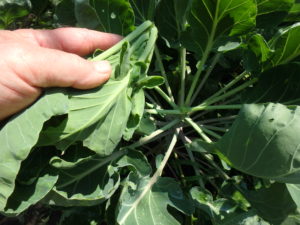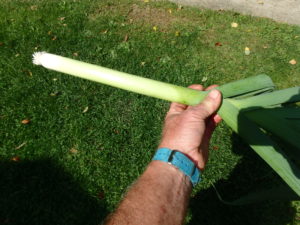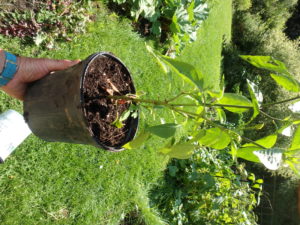Six Fall Chores to Do This Weekend in the Vegetable Garden
Labor Day has come and gone. Big yellow buses are slowing traffic twice a day. But it’s not time to give up on gardening and move on to watching football and waiting in a Lazy-Boy for the maple leaves to turn red. Your gardens still need you. Let’s look at the vegetable garden.
My Brussels sprout are the size of peas, very small for the time of year. But I know how to fix that. I just cut off the top cluster of leaves. That will prevent the plant from using its energy to get taller. Instead it will pump up the “sprouts” we love to eat into big, healthy veggies.
Pumpkins and winter squash need the knife, too. They will continue to elongate their stems, growing out of the garden and across the lawn. But a blossom starting now will have little chance of maturing into a potential Jack-O-Lantern. So nip off that vine and let the energy from the sun and the minerals from the roots go to the fruits that have some chance of success.
Most tomatoes are what we call “indeterminate”. That means they will continue to grow taller until they are killed by frost. Most Roma-type tomatoes (plum) are determinate, as are a few others used mainly for canning or growing in pots. They reach full size and then concentrate on producing one load of fruit that can be picked and canned. But Big Boys and most heirlooms will continue getting taller, which can be a problem.
I’ve seen tomato plants 30 feet tall in commercial greenhouses. They grow up ropes that can be lowered down for picking. But you probably are not equipped to deal with tomato plants that are even 8 feet tall. So nip off the tips of tall branches.
If you haven’t been paying attention to your tomatoes for a few weeks, you might well have some fruit laden branches laying on the ground. These are much more susceptible to rot than fruit that is tied to a stake or cage. Lift the branches and tie them to the outside of the tomato cage. I recently was give some old panty hose that I cut into strips and used to tie up mine. It’s soft and stretchy, and does a great job. String is not perfect for the job as it can cut into the stems. Old bed sheets can be cut into strips for the job instead.
Potatoes are reaching full size for many gardeners. I plant mine later than most (mid-June) and they still have nice green leaves that are turning sunshine, carbon dioxide and water into carbohydrates that will keep me plump all winter. But if yours have brown leaves, you can dig them now. Or you can steal a few by reaching under a plant or two and grabbing a spud for dinner, but leaving the plant itself undisturbed.
As with any plant that is susceptible to fungal diseases, I do not toss potato plants onto the compost pile. Squash, tomatoes and potatoes all fall into this category. I carefully dig all the plants (including leaves and roots) and put them on a brush pile I will burn this winter after snow falls. If you don’t have a burn pile, you can put them in household trash or create a separate pile in a far corner of your property. I do that to minimize fungal diseases next year.
Leeks are ready to harvest, but can stay in the ground a few more weeks. I use leeks not only for leek and potato soup, but also as a substitute for onions. And you don’t have to just use the white part of leeks. Commercial growers hill soil over the leeks as they grow, keeping a longer portion white than I do. But most of the green part of the stem is good to use, too. I pick every other one now, thinning them out, and leaving some to get even bigger.
My peppers are pathetic this year. I only planted a few, some Hungarian wax and a few sweet peppers. I got a few of the hot wax peppers early on, but the cool, rainy summer has not encouraged most plants to blossom and produce fruit.
By now my peppers must be scared that winter is coming and they have not produced enough seeds to keep their line of DNA alive. We had one night where the temperature went down to 33 degrees! That should have been a wake-up call. So I am hoping that they will bloom and produce some fruit during the hot Indian Summer days that are sure to come.
I am trying an experiment with my peppers this year. On Labor Day I dug up 2 Hungarian hot wax peppers and transplanted them into 8-inch pots. I used potting soil, not garden soil in the pots as it will stay fluffier than garden soil, which tends to compact in a pot. I am keeping them in the garden, but will carry them inside any time the temperature is predicted to go much below 50 degrees. Then I’ll carry them outside again in the morning, sort of like walking the dog. They are wind-pollinated, so being indoors will not be a problem. I’ll let you know if I get some peppers this way.
As a rabid, mad-dog gardener I never stop thinking about my garden. There is always something to try – which keeps me young.
Do you suffer from hay fever? Read about the true culprit at Henry’s blog https://dailyuv.com/news/





